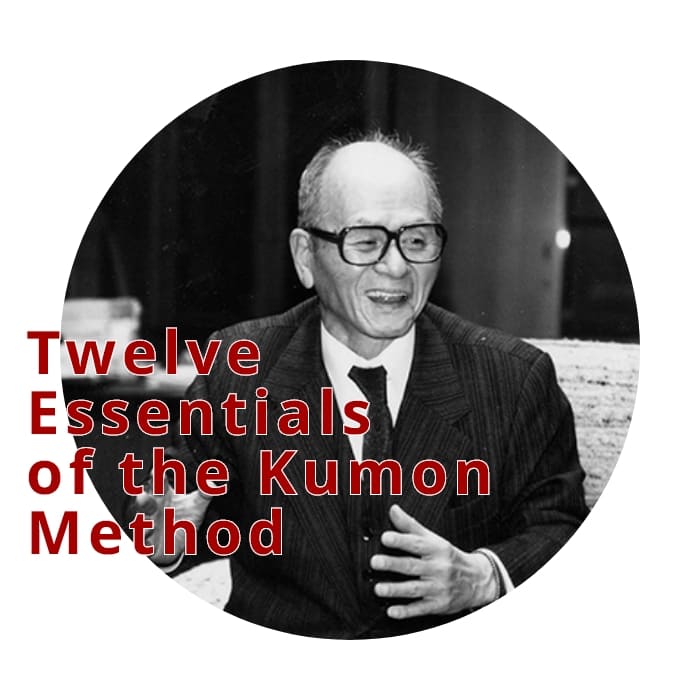Part 1 Individualized Learning

Mainstream education must be individualized, "just-right" education tailored to each student's ability. We cannot fully develop each child's ability nor seek the potential of each individual via the conventional methods employed by mainstream schools and after-school learning centers, because they ignore personality and ability differences among children. However, through the Kumon Method, we can provide learning suitable for each and every child's ability, thereby realizing the fundamentals of education, that is, to foster capable people by developing each child's ability to the maximum.
Toru Kumon
With the Kumon Method, Instructors provide individualized instruction tailored to each child's ability.
The individualized and ability-based method of learning at Kumon is not the same as one-to-one tutored
lessons or classes where students are divided up according to ability. What we mean by this is that each
individual student learns at a level that is suited to his or her ability. In the Kumon Center students
are not separated into different classes according to age.
Students' abilities differ due to the environment they have been brought up in, the knowledge they have
already built up, and the amount of practice they have already had in certain areas. If we have students
study the same material just because they are the same age, then that material may be too difficult for
some and cause them to lose confidence. Conversely, other students may be bored because the material is
too easy for them. For this reason it is vital to consider the level of material suitable for each
individual's level of ability when beginning study.
We could say the same when it comes to acquiring skills such as the ability to swim or play the piano. For
example, we cannot teach children who are still unable to kick their legs well to do the front crawl
straight away. At the other end of the spectrum, pushing children who have already mastered the front
crawl to practice kicking their legs more than necessary would just be demotivating. In addition, the
speed at which students master material at each stage of the learning process naturally differs. For
example, in the case of math study when children are learning the times tables, while there are children
who can master them with five times practice, there are also children who may need 10 or 20 times practice
to become proficient.
The Kumon Method places utmost importance on mastery of reading, writing and calculation, which are the
skills that form the basis for all learning. We provide a learning program that considers the academic
ability of each student at the time he or she enrolls, and then we continue to tailor the program to the
individual speed at which each student learns after beginning study. What makes that possible is the Kumon
worksheets which are divided into very small steps—ranging in content from material that is easy even for
preschoolers or children with special needs to study, all the way up to university level material.
For children to learn with motivation and develop their ability to their full potential, we as providers
of education must not force our theories or methods on students. Rather, we need to stand in the shoes of
each individual student and think about the kind of education we should provide.
